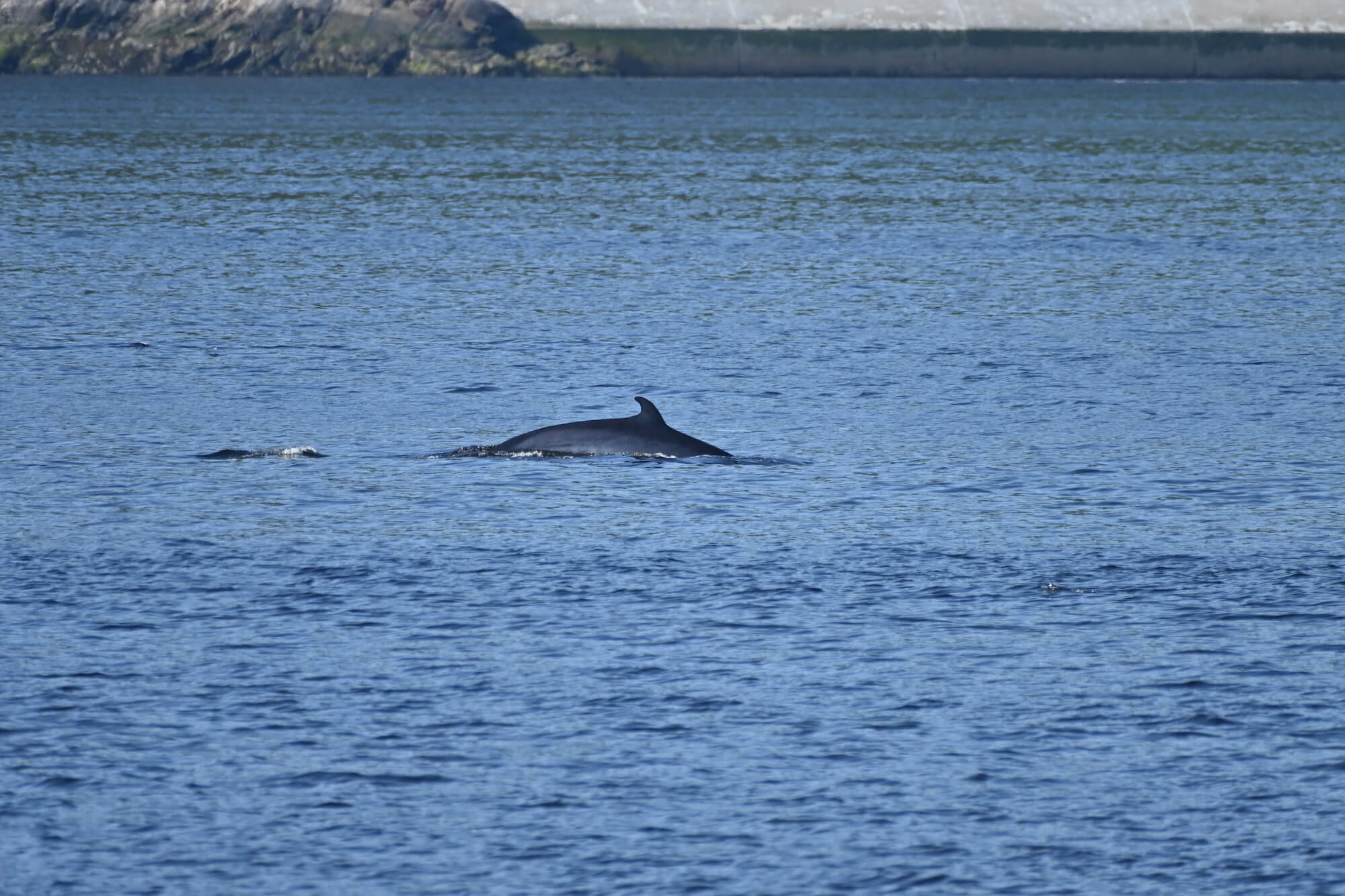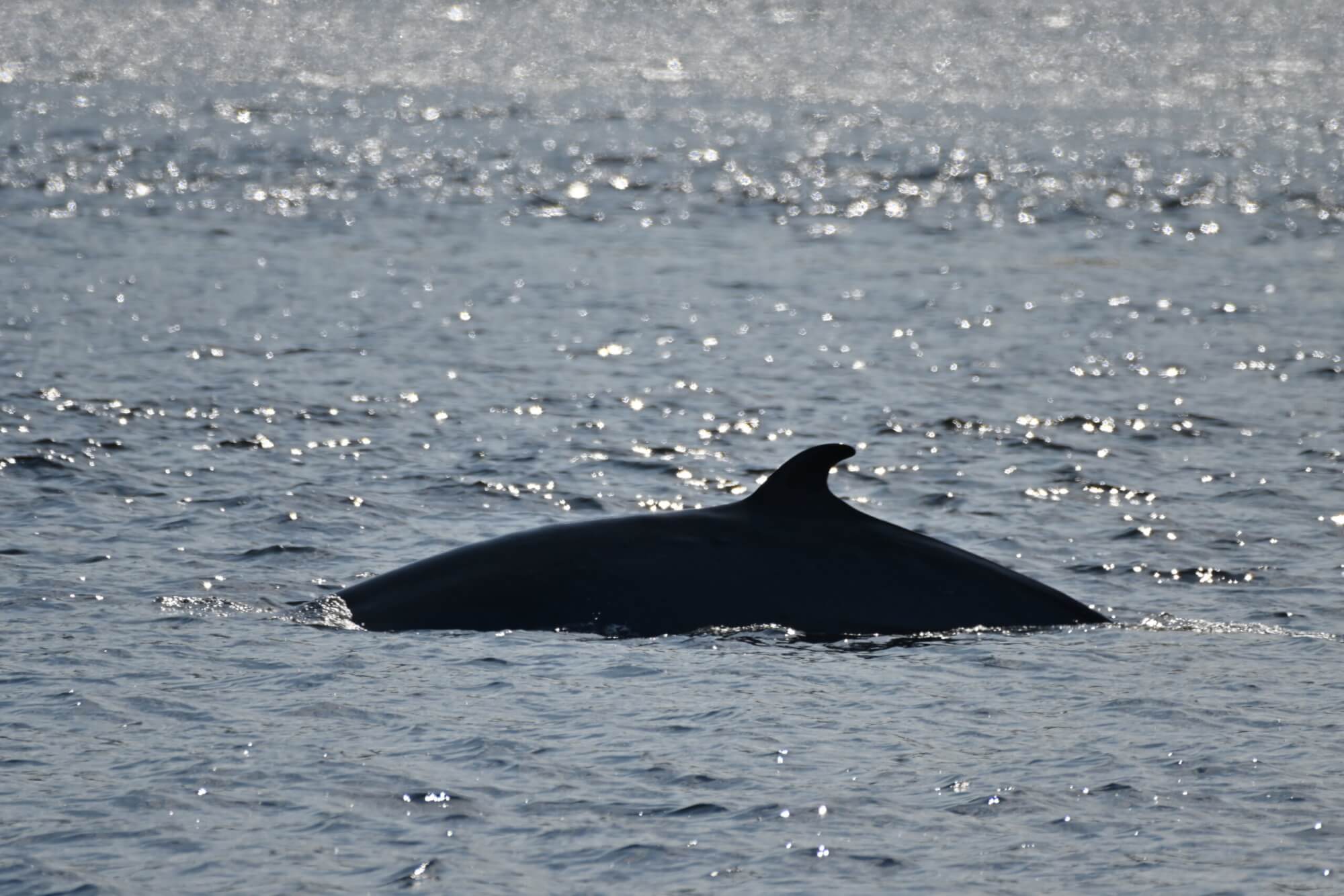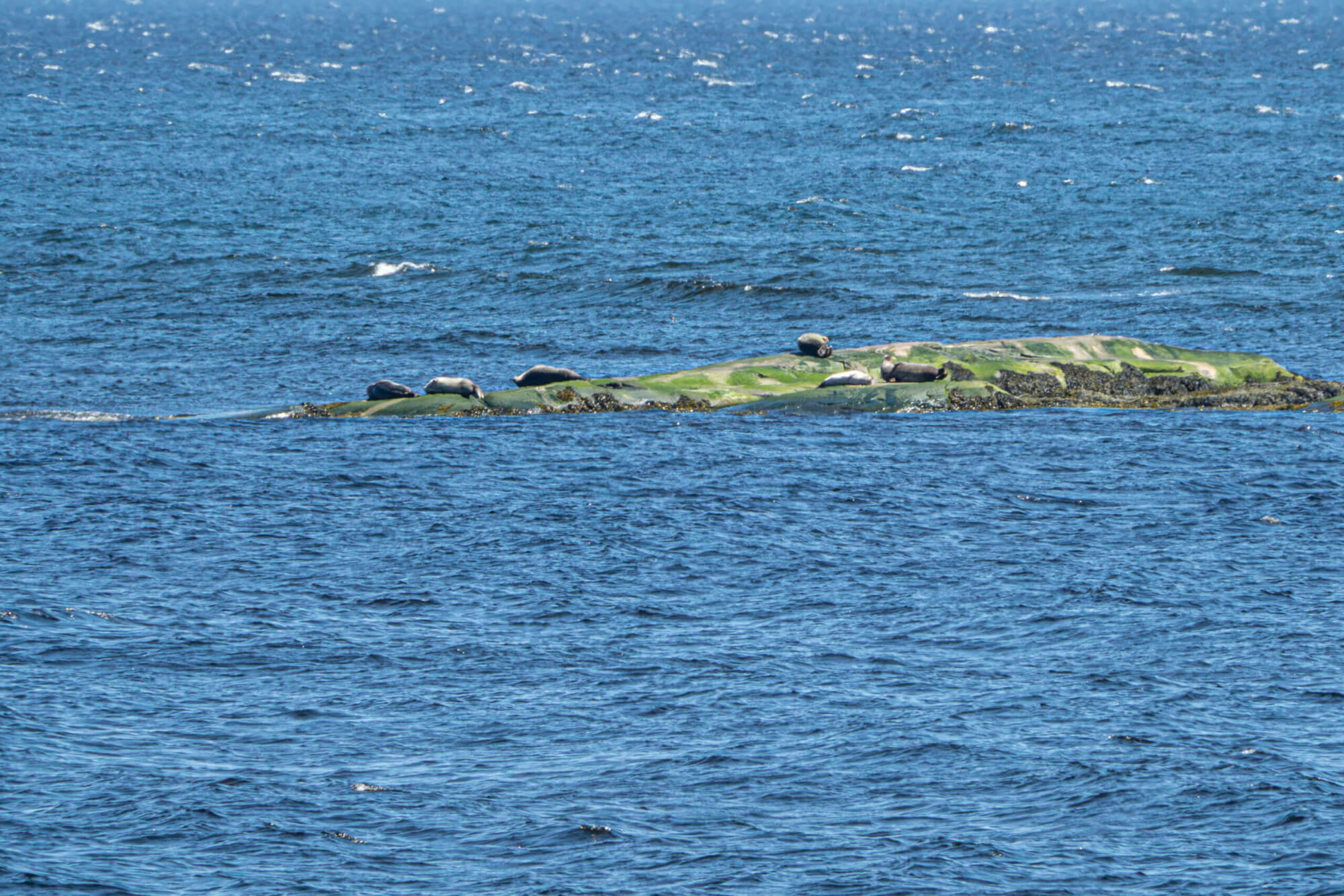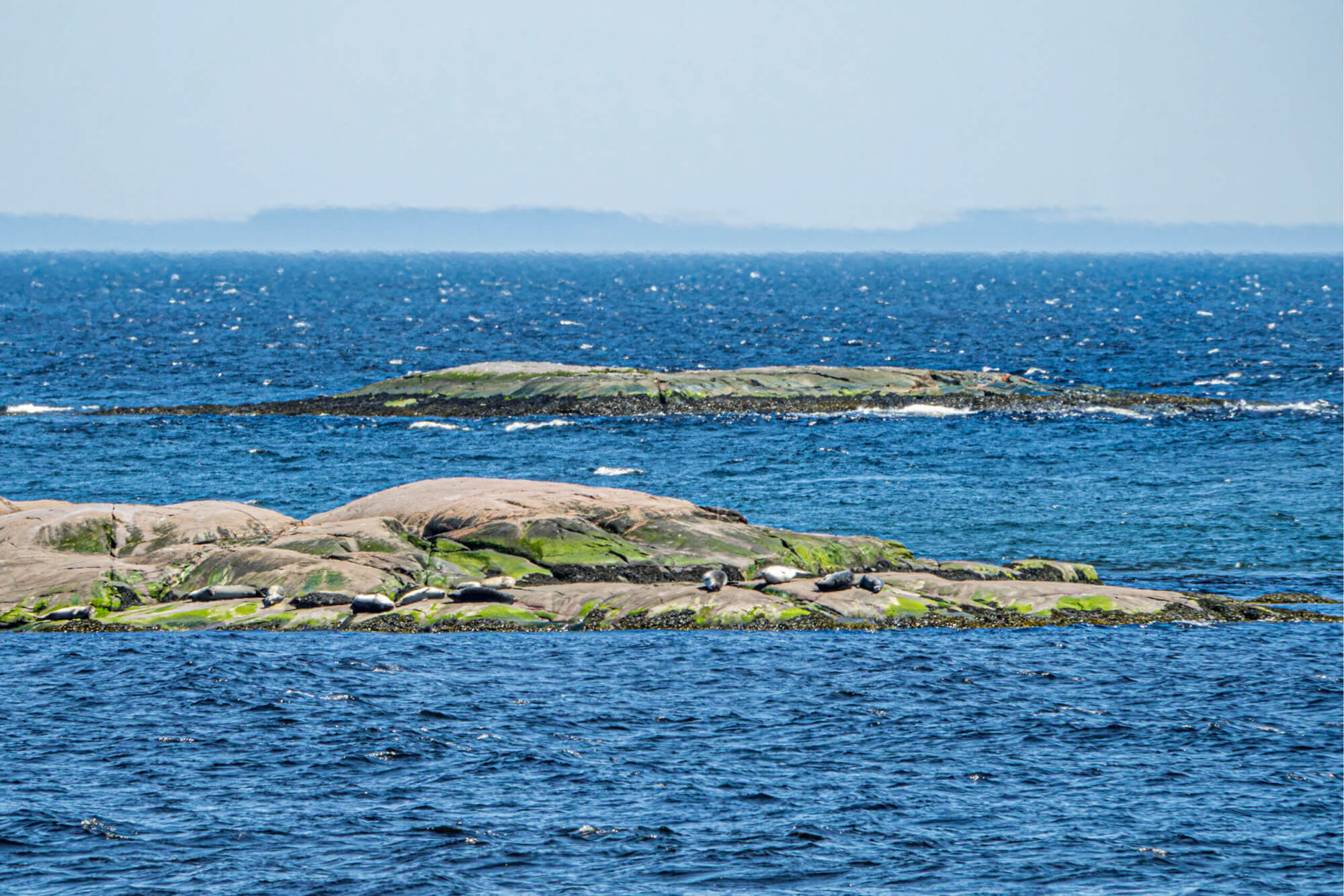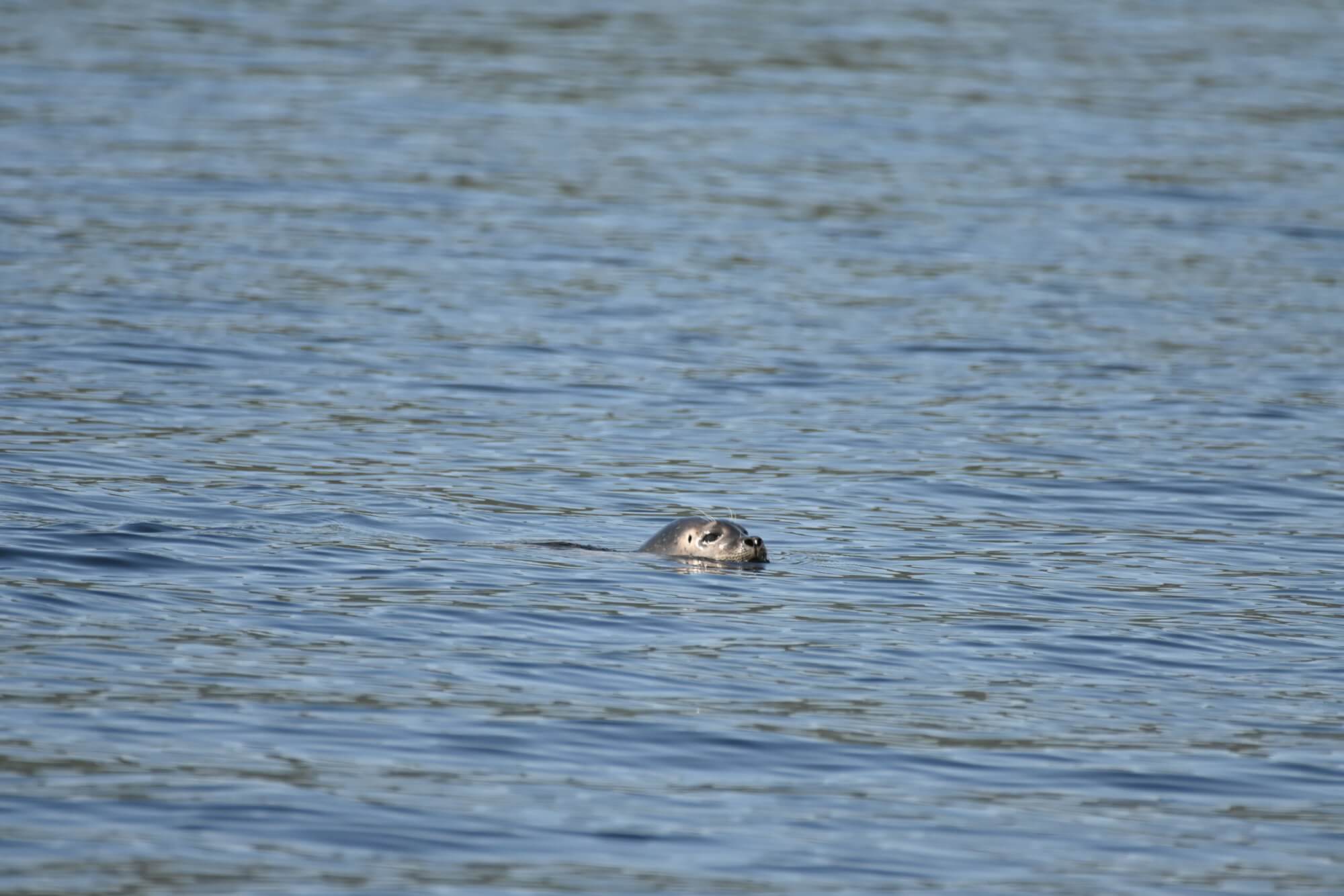Even if the week was quiet in terms of observations, the presence of minke whales did add a little action to the picture. Belugas and harbour porpoises were also spotted in a number of locations; however, with one exception, no large rorquals were reported. On the other hand, seal pupping season is in full swing and pups are already being seen on the beaches, so let’s all stay alert and careful not to disturb them!
Days and evenings for cetaceans
In Tadoussac, the presence of belugas and minke whales brighten the days for staff at the Marine Mammal Interpretation Centre, whose large windows overlook the Saguenay Fjord. In this same sector, harbour seals have been resting on the rocks in their usual hangouts.
In Les Escoumins, a naturalist marvels at the horizon one beautiful evening before a handful of small cetaceans arrive to add even more poetry to this breathtaking moment. “I saw a herd of about ten harbour porpoises split into four smaller groups off Pointe-de-la-Croix, just as the sun was going down. Just to make it that much more memorable!”
In Les Bergeronnes, belugas have been regularly swimming near shore, white whales glistening against the blue backdrop of the St. Lawrence. Because it is endangered, it is forbidden to approach within 400 metres of this species. Observing them from land is therefore one of the few opportunities where one can watch them with the added satisfaction of knowing that they aren’t being disturbed in their natural environment. Farther upstream, a group of three individuals was also spotted during the Isle-aux-Coudres ferry crossing.
At the mouth of the Magpie River, about 30 seals were basking in the sun and one marine mammal enthusiast had the chance to capture some magnificent shots. In Gaspé Bay, a minke whale sighting is indicated in the marine mammal observation data visualization tool developed by the Marine Mammal Observation Network. In fact, anyone can use this citizen science tool to submit their observations.
One exception
In the estuary, more precisely in Franquelin, a seasoned observer had the chance to admire a passing humpback whale: “She showed her tail when she dove.” Indeed, this species generally does show its caudal fin when it dives. When the whale arches its back, its tail fin slowly rises into the air until it is completely vertical. One can then see the colour pattern of the underside of its tail, which is unique to each individual and which facilitates identification. Belugas offshore, a minke whale and a few porpoises were also spotted in the area.
Heads up for seals!
Harbour seals give birth on the shores of the St. Lawrence between mid-May and mid-June. However, females may leave their young alone on the shore for several hours or even days to go feed. It is therefore essential to maintain a distance of 100 metres from the seal to avoid causing it stress. If the seal has visible injuries, if it is in an awkward place for human activities or if you see other people disturbing or handling it, contact the Quebec Marine Mammal Emergency Response Network at 1-877-722-5346. The best course of action will be determined by experts.


